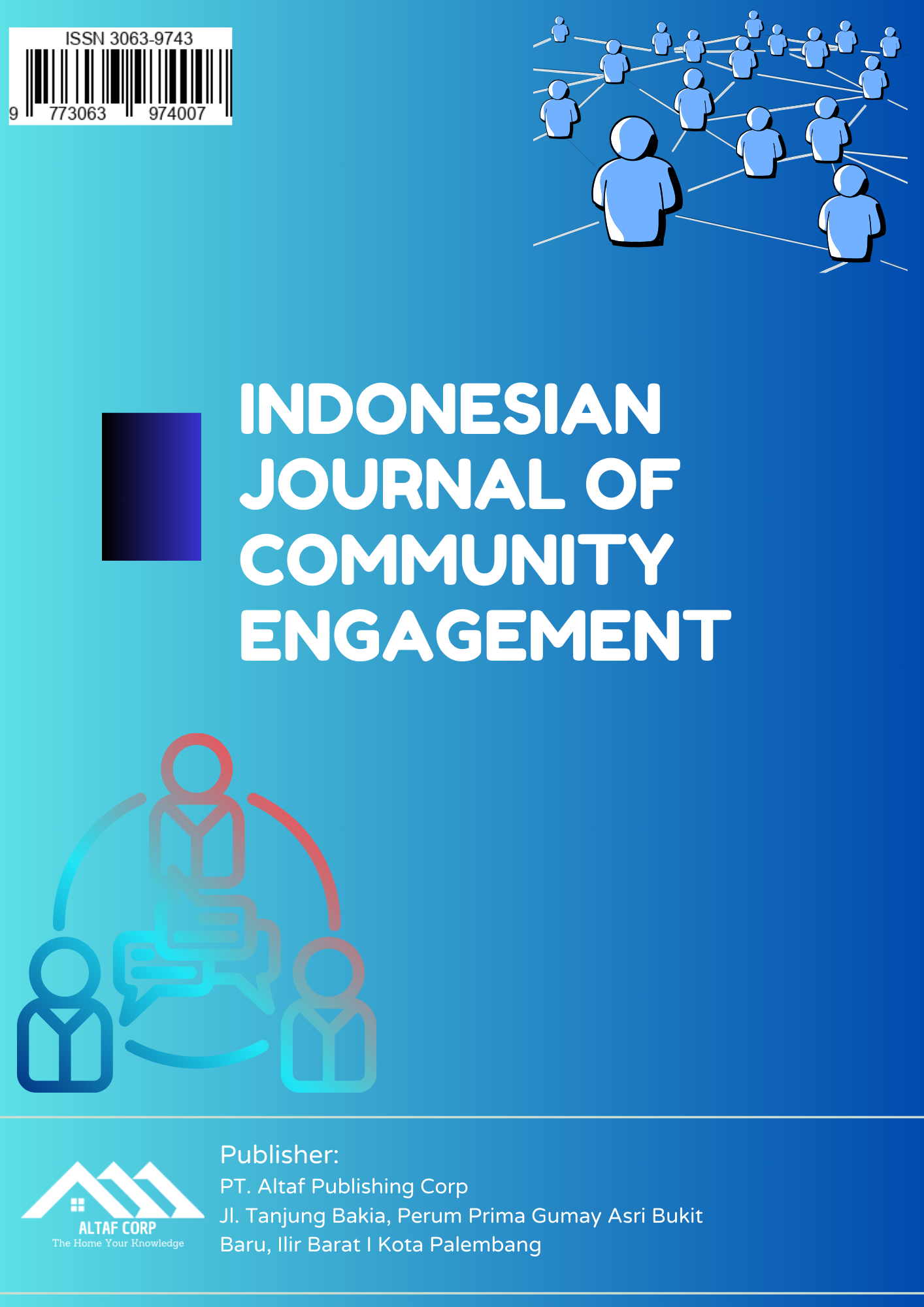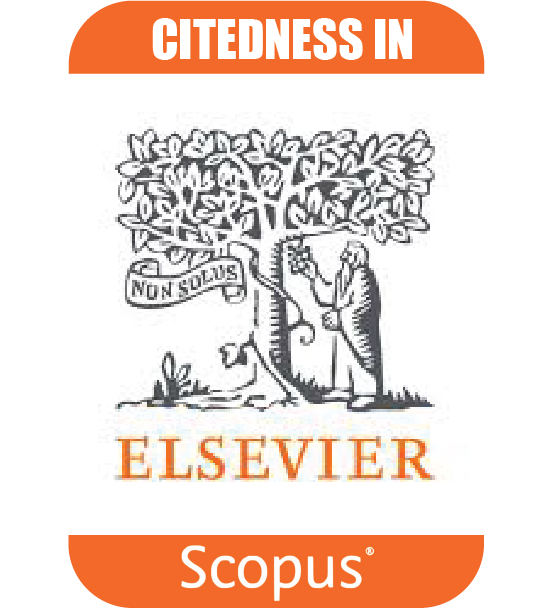Empowering Eco-Friendly MSMEs through Tax Management Education and Product Innovation in Palembang City
DOI:
https://doi.org/10.70895/ijce.v2i1.86Keywords:
Green entrepreneurship, tax literacy, sustainable MSME’s, community empowermentAbstract
This Community Service Program aims to empower environmentally friendly Micro, Small, and Medium Enterprises (MSMEs) in Palembang City through training on developing sustainable water hyacinth-based products and tax literacy education. The program was implemented using participatory methods such as field surveys, workshops, mentoring, and focus group discussions (FGDs). Participants were trained to process water hyacinth into environmentally friendly products with economic value and to manage their business finances and taxes more effectively. The results of the program showed a significant increase in participants' understanding of sustainable entrepreneurship and tax compliance, which contributes to environmental conservation and local economic growth. This program demonstrates that integrating tax management training with green innovation can strengthen the capacity of MSMEs towards sustainability and fiscal responsibility.
Downloads
References
Arifianto, D. (2022). Utilizing water hyacinth waste as a green economy-based community business opportunity. Journal of Community Service and Empowerment, 4(2), 85–94.
Astuti, T. (2018). The potential of utilizing water hyacinth as a raw material for environmentally friendly products. Journal of Environmental Biotechnology, 2(1), 45–53.
Dewi, P., & Purwanti, L. (2020). Water hyacinth handicrafts as a creative economic product of the Kulon Progo community. Journal of Arts and Creative Economy, 6(1), 55–64.
Directorate General of Taxes. (2023). Annual report of the Directorate General of Taxes 2023. Ministry of Finance of the Republic of Indonesia.
Hapsari, D., Lestari, F., & Rachmawati, N. (2019). Utilizing aquatic plants as alternative raw materials for the creative industry. Journal of Sustainable Development, 3(2), 120–131.
Iriani, S., Handayani, R., & Wijaya, T. (2019). Distribution and characteristics of water hyacinth in the waters of South Sumatra. Journal of Tropical Environment, 7(3), 140–152.
Kurniasari, E., & Widiyanti, R. (2016). Utilization of water hyacinth fiber as an environmentally friendly recycled paper material. Journal of Materials Engineering, 8(2), 99–108.
Lestari, N., & Arum, D. (2020). Water hyacinth fiber-based product innovation in supporting a green economy. Journal of Innovation and Environment, 5(1), 34–42.
Mardikanto, T. (2013). Community empowerment from a public policy perspective. Bandung: Alfabeta.
Mulyani, S. (2019). Water hyacinth craft product development in Mojokerto as a community empowerment strategy. Journal of Community Service, 2(1), 23–31.
Ndimele, P. E., Kumolu-Johnson, C. A., Anetekhai, M. A., & Chukwuka, K. S. (2011). The invasive aquatic macrophyte, water hyacinth (Eichhornia crassipes): Problems and prospects. Research Journal of Environmental Sciences, 5(6), 509–520.
Putra, R., & Mulyani, E. (2018). Utilization of water hyacinth as a source of biomass and organic fertilizer. Journal of Renewable Energy, 10(3), 170–178.
Putri, D., & Rahmawati, F. (2022). The influence of tax literacy on taxpayer compliance of MSMEs in Indonesia. Indonesian Taxation Journal, 6(1), 44–56.
Rahmawati, D. (2020). Utilization of water hyacinth fiber as a hydroponic growing medium. Journal of Modern Agriculture, 9(1), 25–33.
Rachmawati, N. (2017). Economic potential of utilizing aquatic plants in coastal areas. Journal of Economic Empowerment, 4(1), 10–19.
Saiidah, F. (2019). Community empowerment methods: Theoretical and applied approaches. Journal of Social Sciences and Development, 5(2), 100–112.
Santos, P., Almeida, V., & Torres, M. (2019). Eco-friendly crafts from aquatic plants: A community-based approach. International Journal of Green Business, 8(4), 60–71.
Sari, M., & Handayani, E. (2021). Transforming water hyacinth waste into economic opportunities for rural communities. Journal of Green Economy, 3(1), 55–66.
Sharma, A., & Thomas, S. (2020). Sustainable utilization of water hyacinth: From waste to wealth. Journal of Environmental Development, 12(2), 88–97.
Sulistyo, A., Wibowo, P., & Lestari, R. (2014). Impact of water hyacinth growth on tropical river ecosystems. Indonesian Journal of the Environment, 6(2), 70–79.
Suryani, M. (2018). Community empowerment through the water hyacinth craft industry in Klaten. Journal of Creative Economy and Empowerment, 2(3), 101–111.
United Nations Environment Programme (UNEP). (2021). Circular economy in action: Global perspectives on sustainable resource management. Nairobi: UNEP.
Villamagna, A. M., & Murphy, B. R. (2009). Ecological and socio-economic impacts of invasive water hyacinth (Eichhornia crassipes): A review. Freshwater Biology, 55(2), 282–298.
Wulandari, S., Rahman, D., & Puspita, L. (2023). Utilization of water hyacinth fiber as a basic ingredient for natural aromatherapy products. Journal of Creative Industry Innovation, 4(2), 88–97.
Yuniarti, D., Pramono, S., & Kurniawan, B. (2016). Water hyacinth growth and its impact on swamp waters in South Sumatra. Journal of Aquatic Biology, 5(1), 40–50.
Downloads
Published
Issue
Section
License
Copyright (c) 2025 Nilam Kesuma, Nur Khamisah, Rizka Novelia, Sri Maryati (Author)

This work is licensed under a Creative Commons Attribution-ShareAlike 4.0 International License.





















